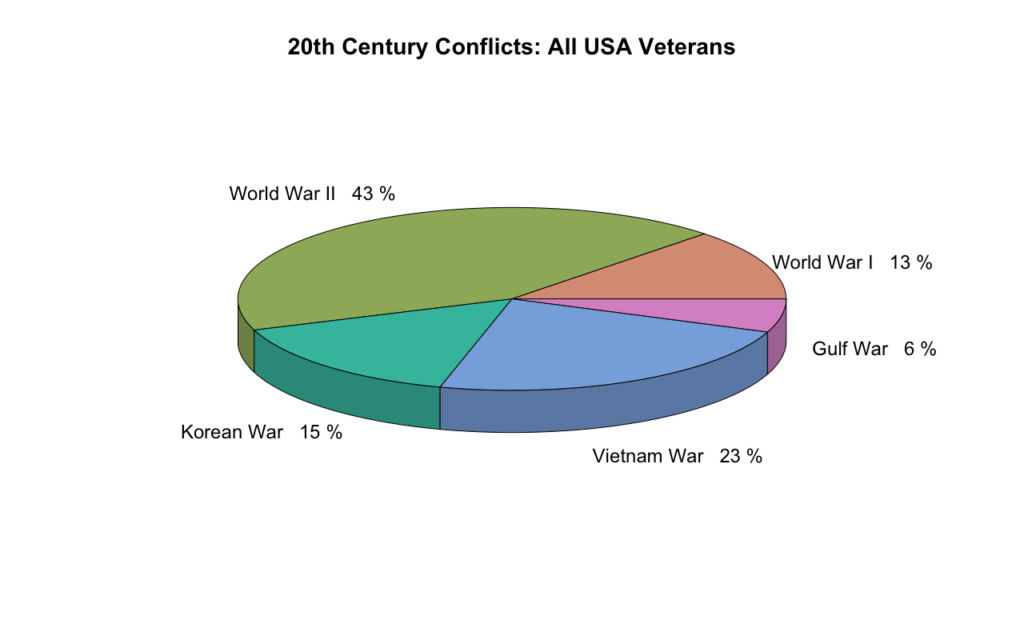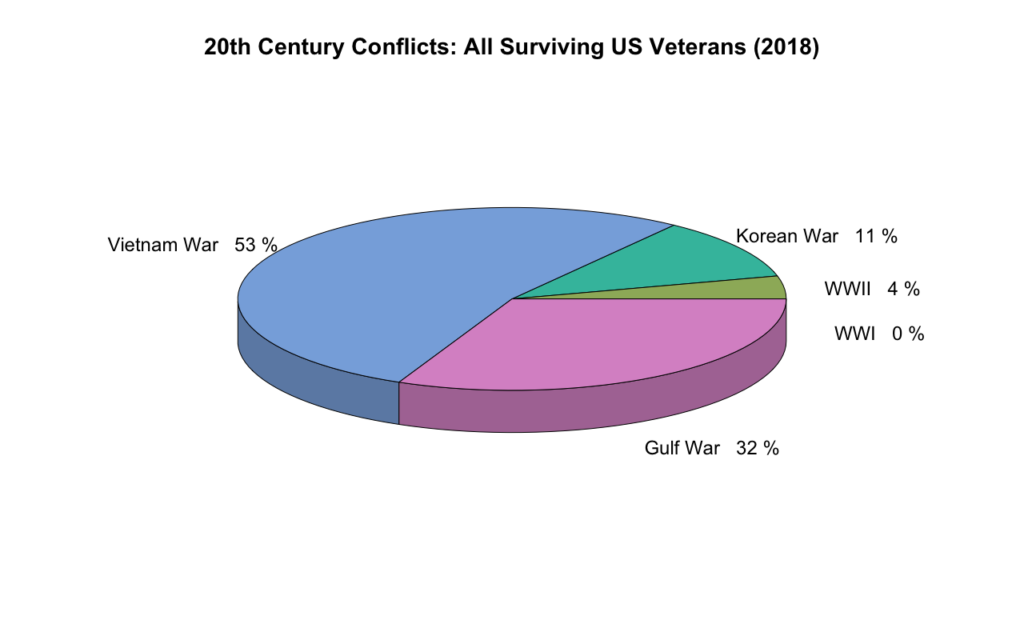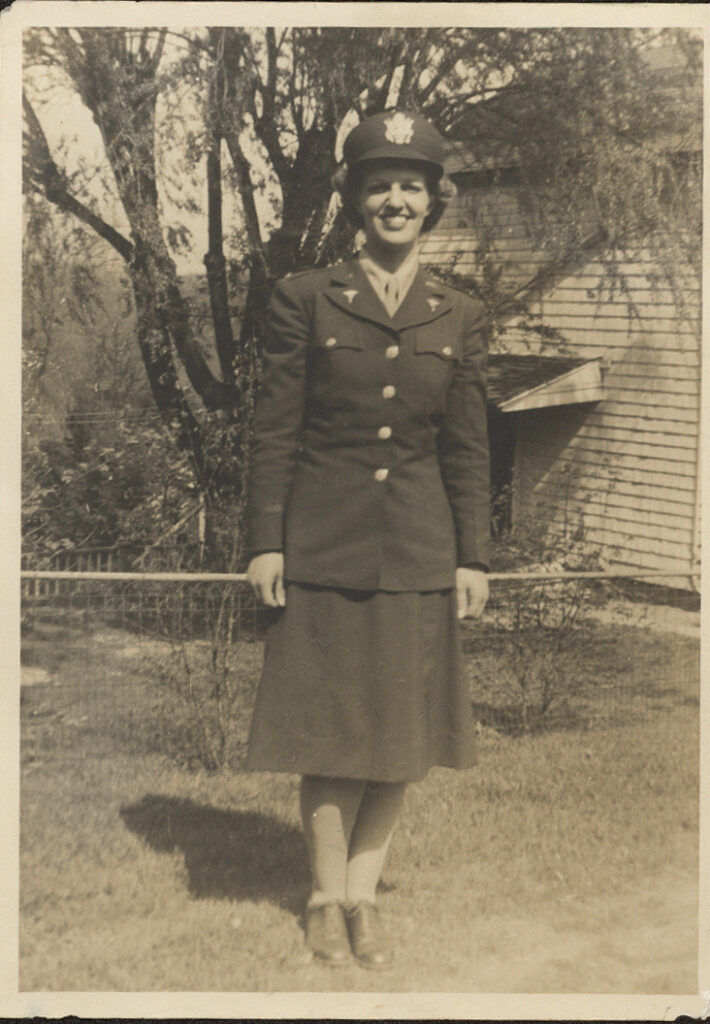Visualizing: Comparisons
How representative is the Veterans History Project?
The 20th century saw the US military engaged in conflicts around the world. According to the U.S. Department of Veterans Affairs nearly 42 million American men and women served their country in these conflicts.
From those millions of veterans, the Connecticut Veterans History Project has nearly 800 different entries. And while that may seem a small snapshot, the oral histories alone add up to nearly 1000 hours.
Comparing historic statistics from the nation-wide V.A. to the Connecticut-wide Veterans History Project helps us better understand how this collection relates to the American military experience in the 20th century:
By making this comparison, it’s easier to see how the Project does – and does not – reflect the nation as a whole.
One easy example comes with WW I. Over 4.7 million American men and women served in that conflict. So why are only two WW I veterans included in the Project’s records?
The reason is simply a matter of time:
The last verified US WW I veteran died in 2011, at the incredible age of 110.
The two WW I veterans with entries in the Veterans History Project had both passed away before interviews could be conducted. So instead of their voices and memories, we have their personal papers and photographs to draw on.
At the Project’s creation in the early 2000s, organizers were concerned about the memories of WW II veterans. Why? Because the American experience in WW II was – and is – swiftly vanishing from living memory.
In the early 2000s, Project interviewers spread out across the state to conduct oral history interviews. Ultimately, they collected over 400 interviews with WW II veterans.
When we compare the national veteran population in 2018 to the Veterans History Project, the motivation for this urgency is obvious:
When does memory become history?
At some point in the near future, the news will report the death of the last verified US veteran from WW II. This will be a milepost in the transition from lived memory to archival history.
Why does this matter?
The past flattens with distance. We have a hard time relating to people who lived 100 years ago, let alone 250 years ago. And when we do look at the distant past, our focus tends towards just a handful of “historic” figures and events. Consider how much more we know about the generals of the Revolutionary War compared to the average foot soldier.
At risk is our awareness of the past as someone’s life experience. Wars, from the Revolution to Afghanistan, are much more than the a few generals and their weighty decisions. Each conflict is the story of many individuals, each with unique experiences.
These experiences endure as memories. Some may hear these memories from a parent, grandparent or another relative or community member. But when the individual is lost, too often their memory also vanishes.
In just a few short years, many of the WW II veterans who were interviewed for the Veterans History Project have already passed away.
With time, these interviews will become ever more important. Through them, some memories endure. In them, we can preserve the personal memories of veterans, and hear history as it was lived.









